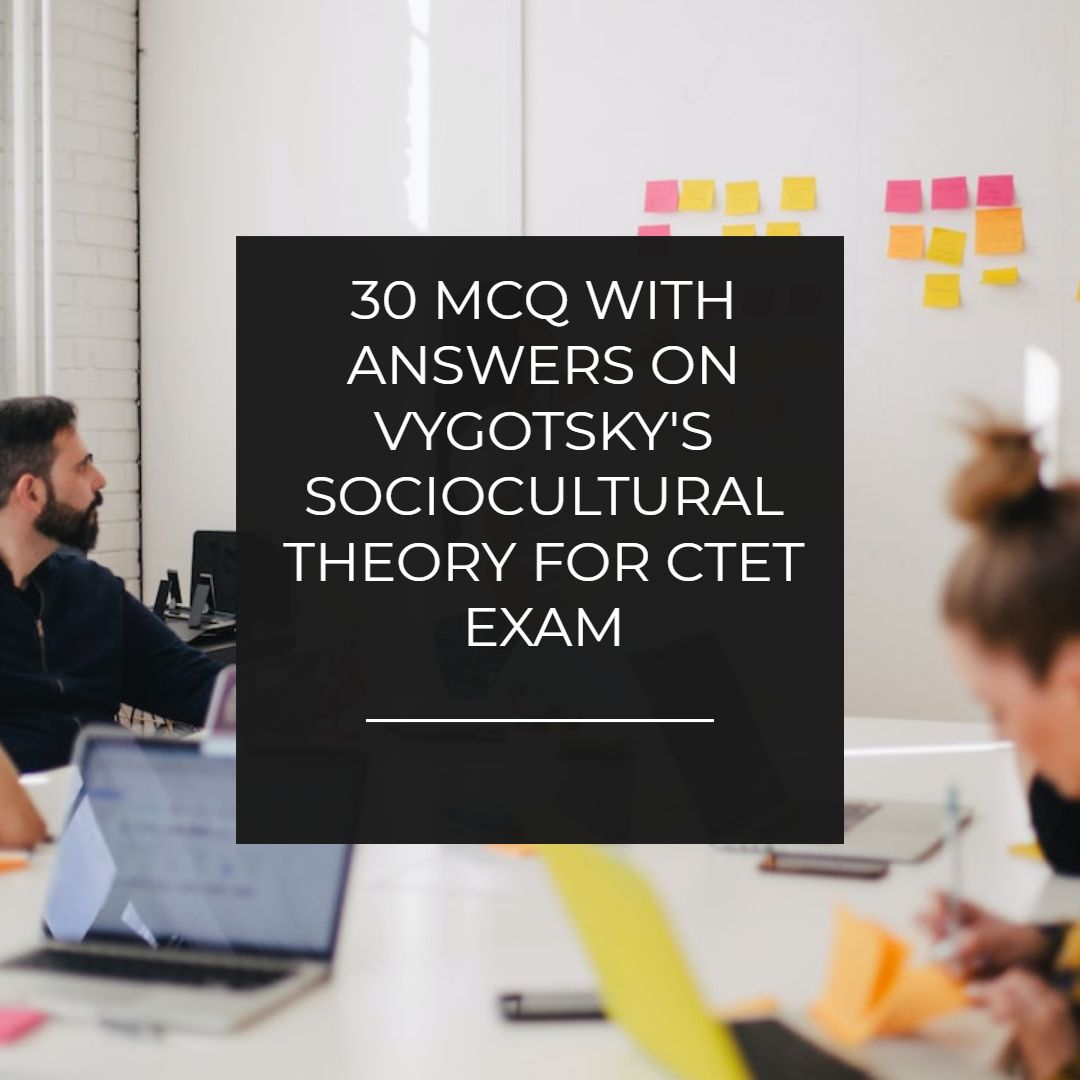CTET EVS: Encouraging Active Learning
CTET EVS (Environmental Studies) plays a crucial role in the overall development of students, fostering their understanding of the environment, sustainability, and the interdependence of ecosystems. To make the learning process more effective and engaging, it is essential to encourage active learning in CTET EVS classrooms. Active learning methodologies empower students to take an active role in their education, promoting critical thinking, problem-solving, and collaboration skills. This article aims to explore the significance of active learning in CTET EVS and provide strategies for its effective implementation.
- CTET Questions for Preparation
- CTET Preparation in One Month
- CTET Preparation In Hindi
- How to Prepare for CTET at Home
- How to Prepare for CTET Paper 1
- How to Start CTET Preparation
Importance of Active Learning in CTET EVS
Active learning holds immense importance in the field of CTET EVS education. It goes beyond passive information absorption and encourages students to participate actively in their learning process. By engaging in hands-on activities, collaborative projects, and reflective discussions, students develop a deeper understanding of environmental concepts and are more likely to retain the knowledge in the long term.
Understanding Active Learning
Active learning can be defined as an instructional approach that involves students in meaningful activities, where they construct their own knowledge through exploration and discovery. This approach contrasts with traditional passive learning methods, such as lectures or rote memorization. Active learning in CTET EVS encourages students to become active participants in their education, allowing them to develop critical thinking skills, creativity, and a sense of ownership over their learning.
Active learning brings numerous benefits to CTET EVS students. Firstly, it enhances their understanding and retention of environmental concepts. By engaging in hands-on experiments, field trips, and real-world problem-solving, students can connect theoretical knowledge to practical applications, making the learning experience more relevant and memorable.
Secondly, active learning fosters collaboration and communication skills. Through group projects, debates, and discussions, students learn to work together, express their ideas, and respect diverse perspectives. These skills are vital for developing well-rounded individuals who can contribute positively to society.
Strategies for Encouraging Active Learning in CTET EVS
- Inquiry-based learning: Encourage students to ask questions, investigate environmental issues, and find solutions. Provide
them with opportunities to conduct experiments, analyze data, and draw conclusions.
-
Hands-on activities: Incorporate hands-on activities like nature walks, gardening, or recycling projects to make learning tangible and experiential. These activities create a deeper connection with the environment and foster a sense of responsibility towards its conservation.
-
Collaborative learning: Assign group projects and activities that require students to work together, share ideas, and solve problems collectively. This promotes teamwork and enhances interpersonal skills.
-
Use of technology: Integrate technology tools such as interactive simulations, educational apps, or virtual reality experiences to create immersive learning environments. Technology can make abstract concepts more concrete and engaging for students.
Incorporating Active Learning in CTET EVS Lesson Plans
To effectively incorporate active learning into CTET EVS lesson plans, teachers can follow these steps:
-
Setting clear learning objectives: Clearly define the learning outcomes and communicate them to the students. This helps students understand what they are expected to achieve and keeps them focused throughout the lesson.
-
Designing engaging activities: Plan activities that require active participation, such as group discussions, debates, case studies, or hands-on experiments. These activities should be aligned with the learning objectives and cater to different learning styles.
-
Providing opportunities for reflection: After completing an activity, provide time for students to reflect on their learning. This can be done through individual reflections, group discussions, or written reflections in journals. Reflection helps consolidate learning and encourages metacognition.
Enhancing Student Engagement through Active Learning
Active learning methods have a profound impact on student engagement in CTET EVS classrooms. By incorporating active learning strategies, teachers can enhance student engagement in the following ways:
-
Fostering critical thinking skills: Active learning promotes higher-order thinking skills by challenging students to analyze information, evaluate evidence, and develop logical reasoning. This cultivates a deeper understanding of environmental issues.
-
Promoting problem-solving abilities: Through active learning activities, students develop problem-solving skills as they tackle real-world environmental challenges. This empowers them to become proactive problem-solvers and agents of change.
-
Encouraging creativity and innovation: Active learning encourages students to think creatively and explore innovative solutions to environmental problems. It nurtures their ability to think outside the box and encourages a sense of curiosity.
Overcoming Challenges in Implementing Active Learning in CTET EVS
Implementing active learning in CTET EVS classrooms may pose certain challenges. However, with careful planning and implementation strategies, these challenges can be overcome:
-
Classroom management: Active learning activities require effective classroom management to ensure that students stay on task and contribute meaningfully. Teachers can establish clear guidelines and expectations to maintain an organized learning environment.
-
Limited resources: Some active learning strategies may require additional resources or equipment. Teachers can explore alternative options or adapt activities to the available resources, ensuring that all students can actively participate.
-
Assessment and evaluation: Active learning may not align with traditional assessment methods. Teachers can utilize alternative assessment techniques, such as portfolios, presentations, or project-based evaluations, to measure student learning accurately.
The Role of Teachers in Facilitating Active Learning in CTET EVS
Teachers play a vital role in facilitating active learning in CTET EVS classrooms. They can adopt the following strategies to create an environment conducive to active learning:
-
Creating a conducive learning environment: Establish a positive and inclusive classroom culture where students feel comfortable expressing their ideas and taking risks. Create a safe space for open discussions and encourage active participation.
-
Facilitating discussions and debates: Engage students in meaningful discussions and debates that encourage critical thinking and exploration of different perspectives. Foster a classroom environment where all opinions are valued and respected.
-
Providing constructive feedback: Offer timely and constructive feedback to guide students’ learning. Highlight their strengths and areas for improvement, helping them reflect on their progress and make necessary adjustments.
Conclusion
Active learning in CTET EVS plays a significant role in promoting a holistic and engaging educational experience. By incorporating strategies such as inquiry-based learning, hands-on activities, and collaborative projects, teachers can empower students to become active participants in their own learning journey. Active learning fosters critical thinking, problem-solving, and communication skills, preparing students to be environmentally conscious individuals and active contributors to society.
FAQs
-
How does active learning benefit CTET EVS students?
Active learning benefits CTET EVS students by enhancing their understanding and retention of environmental concepts, fostering collaboration and communication skills, and promoting critical thinking and problem-solving abilities. -
What are some effective strategies for encouraging active learning in CTET EVS?
Effective strategies for encouraging active learning in CTET EVS include inquiry-based learning, hands-on activities, collaborative learning, and the use of technology. -
How can teachers incorporate active learning in their lesson plans for CTET EVS?
Teachers can incorporate active learning in their CTET EVS lesson plans by setting clear learning objectives, designing engaging activities, and providing opportunities for reflection. -
What challenges may arise when implementing active learning in CTET EVS?
Challenges in implementing active learning in CTET EVS may include classroom management, limited resources, and assessment and evaluation methods that align with active learning strategies. -
What role do teachers play in facilitating active learning in CTET EVS?
Teachers play a crucial role in facilitating active learning in CTET EVS by creating a conducive learning environment, facilitating discussions and debates, and providing constructive feedback to students.


